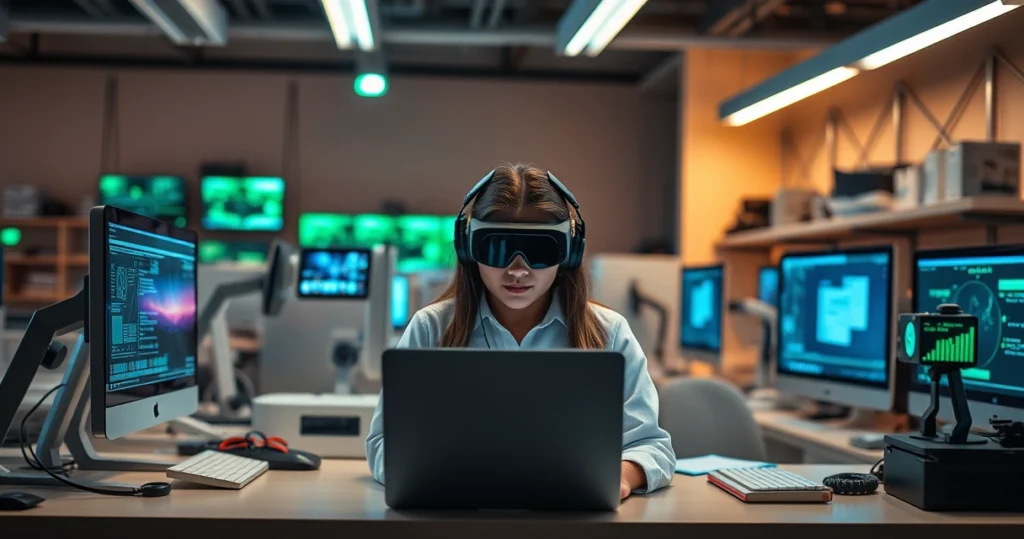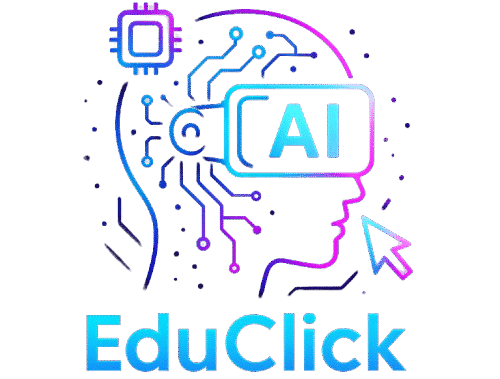Essential Digital Education Tools: Virtual Labs, Simulators, and Beyond
Introduction and Context
In an increasingly digital world, the landscape of education is evolving rapidly. With the rise of online learning, traditional classrooms are being complemented by innovative solutions such as virtual labs and simulators. These digital tools are not just trends; they are transforming the way education is delivered and experienced. As we look ahead, particularly towards the trends in e-learning 2025, it’s crucial to understand how these technologies can enhance learning outcomes and prepare students for the future.

Development of Digital Education Tools
The development of digital education tools has been driven by the need for more engaging, interactive, and efficient learning experiences. Virtual labs and simulators are at the forefront of this evolution. They provide students with the opportunity to conduct experiments and practice skills in a safe, controlled environment. This is particularly beneficial in fields such as science, engineering, and healthcare, where hands-on experience is essential.
For instance, virtual labs allow students to perform experiments that would be too dangerous or costly to conduct in a physical setting. Similarly, simulators can recreate real-world scenarios, enabling learners to apply theoretical knowledge in practical situations. This bridging of theory and practice is critical in fostering a deeper understanding of complex subjects.
The Role of Virtual Labs
Virtual labs are digital platforms that simulate laboratory environments. They allow students to conduct experiments online, making them accessible from anywhere in the world. This accessibility is particularly important in the context of remote learning, where students may not have access to physical labs.
These labs often include interactive elements such as drag-and-drop features, 3D visualizations, and guided instructions, which enhance student engagement. Moreover, they can accommodate a variety of learning styles, providing personalized experiences that cater to individual needs.
The Importance of Simulators
Simulators also play a crucial role in digital education. They provide immersive experiences that mimic real-life situations. For example, in medical training, simulation-based learning allows students to practice surgical procedures without the risk of harming patients. This not only builds confidence but also hones skills that are critical in high-stakes environments.
Furthermore, simulators are used in various industries, including aviation and engineering, to train professionals in a risk-free setting. As technology advances, the realism and effectiveness of these simulators continue to improve, making them an invaluable tool in education.
Detailed Analysis of Trends in E-Learning 2025
Looking ahead to 2025, several trends in e-learning are poised to shape the educational landscape. One major trend is the increased integration of artificial intelligence (AI) in educational tools. AI can personalize learning experiences by analyzing student performance and adapting content accordingly. This level of customization can greatly enhance student engagement and retention.
Another significant trend is the rise of gamification in education. By incorporating game-like elements into learning activities, educators can create more engaging and motivating environments. This approach not only makes learning fun but also encourages collaboration and problem-solving skills.
Moreover, the use of augmented reality (AR) and virtual reality (VR) technologies is expected to expand. These technologies provide immersive experiences that can deepen understanding and retention of complex subjects. For example, AR can overlay digital information in real-world environments, while VR can transport students to different locations or historical events.

Benefits and Applications
The benefits of utilizing digital education tools such as virtual labs and simulators are manifold. Firstly, they provide opportunities for experiential learning, which is essential in developing critical thinking and problem-solving skills. Students can experiment, make mistakes, and learn from them in a safe environment.
Secondly, these tools enhance accessibility. Students from diverse backgrounds and locations can access high-quality educational resources that were previously unavailable to them. This democratization of education is vital in fostering equity and inclusion.
Furthermore, digital tools can facilitate collaboration among students. Many platforms allow for group work, where learners can collaborate on projects, share ideas, and provide feedback to one another. This collaborative approach mirrors the working environment and prepares students for future careers.
Frequently Asked Questions
- What are virtual labs and how do they work?
Virtual labs are online platforms that simulate laboratory environments, allowing students to conduct experiments and learn in a safe and interactive setting. They work by providing digital tools and resources that replicate the functionality of physical labs.
- How do simulators enhance learning experiences?
Simulators provide immersive, real-world scenarios that allow students to apply theoretical knowledge in practice. This hands-on experience is crucial in fields such as healthcare, aviation, and engineering.
- What trends in e-learning should we expect by 2025?
By 2025, we expect trends such as increased AI integration, gamification, and the use of AR and VR technologies to become more prevalent in e-learning platforms, enhancing personalized and engaging learning experiences.
- Are digital education tools suitable for all age groups?
Yes, digital education tools can be tailored to suit various age groups and learning styles, making them versatile and effective for a wide range of learners.
- How can educators effectively implement these tools in the classroom?
Educators can effectively implement digital tools by integrating them into lesson plans, providing training for students on how to use them, and continuously assessing their effectiveness in enhancing learning outcomes.
Conclusion
In conclusion, essential digital education tools such as virtual labs and simulators are revolutionizing the way we approach learning. As we navigate the trends in e-learning 2025, it is evident that these technologies will play a pivotal role in shaping the future of education. By enhancing accessibility, fostering engagement, and providing immersive experiences, they prepare students for the complexities of the modern world. Embracing these tools is not just about keeping up with trends; it is about equipping learners with the skills and knowledge they need to thrive in an ever-evolving landscape.




